The problems are provided by the Norwegian Ministry of Education and Research (Kunnskapsdepartementet, KD), and the students’ policy briefs are then presented at a meeting at the ministry.
The course, which has been offered to students since 2020, is developed by head of the bachelor’s program in Offentlig administration og ledelse, Jens Jungblut. Jungblut is very much engaged with providing the students a mixture between a practical approach to political science, with a good foundation in theoretical aspects and concepts, and this course is the perfect example of this.
On May 24th 2024, four different groups presented their briefs to several ministerial bureaucrats who gave the students feedback and shared insights into their work.
The problems, and the (possible) solutions
The class for spring 2024 consisted of five ERASMUS students from Germany and Denmark in addition to masters’ students from the master’s in political science. They were divided into groups and could choose between three different topics/problems to which they had to write a 1000–1500-word policy brief and then present it at the ministry.
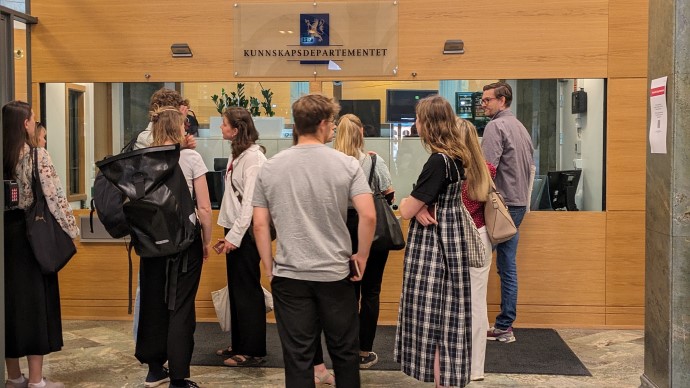
The first group to present was Annika Kolbe, Esther Ejrnæs Bastholm and Clara Johansen – all ERASMUS students in political science from Germany and Denmark. They picked the problem where they were asked to “Discuss and assess the challenges and possible models for providing equal quality in primary, secondary, and upper secondary education throughout all of Norway.”
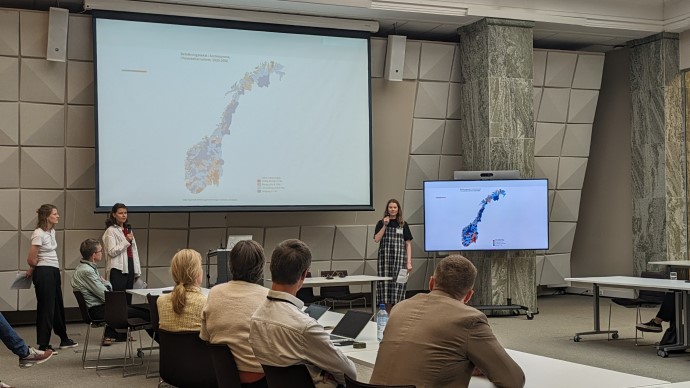
Looking at Norway as a whole, policy instruments to improve the quality and attractiveness of teachers’ education have already been implemented with e.g. the transitioning to the five-year master’s level, but Norway still struggles with low recruitment numbers for teachers especially in rural areas. Thus, it might need some more tailored interventions to specifically address this problem. The assumption is that by making it more attractive to become a teacher (also in rural areas) the number of people interested in taking this job will increase. Group one choose to look primarily on ways of recruiting (and keeping) teachers in the rural parts of Norway, and they proposed the following three solutions to make it more attractive to become a teacher:
1. More autonomy to rural schools to provide freedom from top-down regulations.
2. Better and more consistent onboarding for new teachers.
3. School psychologists should be more involved in supporting students and teachers, to free up the teacher’s time to do their jobs.
The second group, with exchange student Rune Nis Lauenborg Jensen and UiO MA student Victoria Elisabeth Lau, choose the problem linked to “Academic freedom”. The task was to investigate: “What can the leadership of Norwegian universities and university colleges do to protect academic freedom in Norway, and is there a further need for policy initiatives from the ministry?”
The group pointed to several challenges that threaten the academic freedom in Norway as well as other countries. While in general the situation regarding academic freedom in Norway is good, recent debates such as the one at NTNU, point to the need for ongoing attention to the topic. Some systemic challenges also persist and were highlighted by the group, including for example the high number of non-permanently employed staff, the lack of a common definition of academic freedom in Europe and a higher degree of polarization on certain political issues.
They suggested that universities should be given a high degree of autonomy in the matter to regulate academic freedom themselves, but also demand that they teach their students and professors about the importance of academic freedom and continue to highlight the importance of the quality and integrity of research to maintain trust in academia.
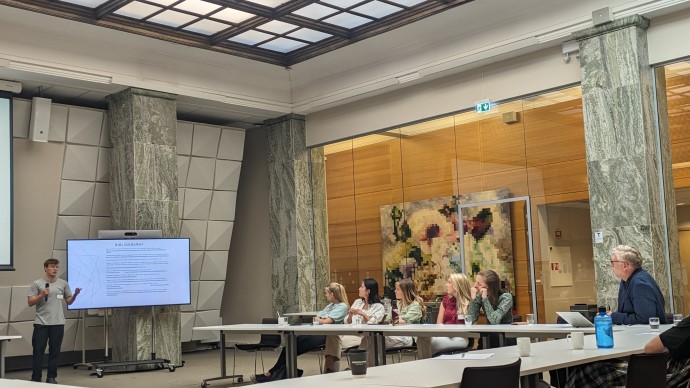
The third and fourth group both chose to look at how policy makers can “ensure a good division of labor between higher education and (higher) vocational education”.
Group three with UiO MA students Katharina Aichem and Elisabeth Struve Fjornes, started by providing a brief overview of the future needs of the Norwegian labour market, as this is crucial for discussing the division between higher education (HE) and vocational education and training (VET). They emphasized that Norway will need more people educated in vocational trades compared to today, especially given that increasing shares of pupils choose higher education over vocational education.
Therefore, they suggested several ways to improve the Norwegian VET system by learning from examples from other countries, i.e. Switzerland and Germany.
They suggested that the information of, and communication with regards to, VET is improved in middle school. This could contribute to a better knowledge about VET among pupils and overcoming negative stereotypes that VET sometimes has among pupils.
Other suggestion, included to increase the competitiveness of VET through highlighting possibilities for exchanges abroad through the ERASMUS scheme and the inclusion of obligatory internships in middle school.
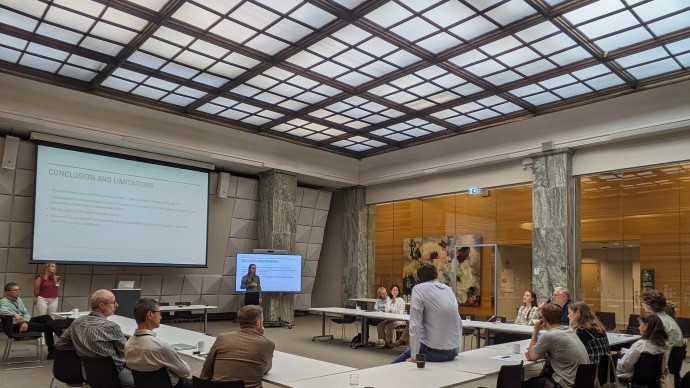
The fourth and final group, consisting of ERASMUS student Jan Malte Alsmeier from Germany and UiO MA students Sigrid Håvarstein Andersen, Nhi Thanh Bui and Sara Aurora Frantzen Nestegard started with describing the situation regarding VET in Norway today: Nearly ten times as many pupils enroll in higher education compared to vocational education.
To address this uneven distribution between the sectors, the group proposed the following policy recommendations:
1. Increase the offer of elective courses in secondary school, with a focus on vocational courses, in order to continue the increase of pupils choosing the vocational education track.
2. Develop systems for an easier transition from the academic track to the vocational track in upper secondary school,
3. Incorporate certain aspects from the German system of “dual study” programs to the existing apprenticeship in Norway, for example increase cooperation between employers and higher education institutions to facilitate a learning path that provides both an apprenticeship and a higher education degree.
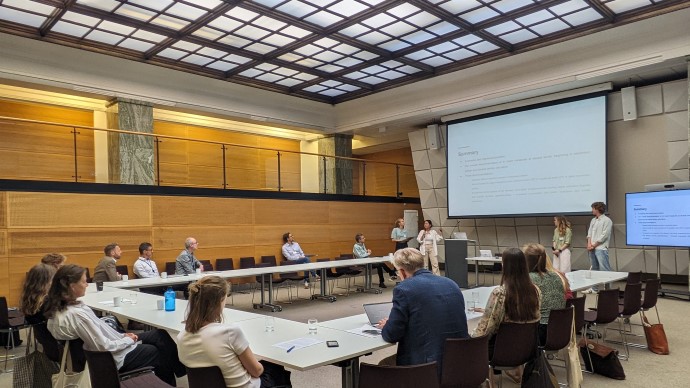
All presentations were followed by questions and feedback with representatives from different sections at KD, amongst them senior adviser in Seksjon for fagskoleutdanning og EØS-rett (FAG), Knut Astad, Vidar Grøtta, Fagdirektør i Seksjon for kvalitetsutvikling og kvalitetsvirkemidler and Håkon Kavli, avdelingsdirektør in the Seksjon for analyse og kunnskapsgrunnlag.
The day was concluded with a briefing on how it is to work at the Norwegian Ministry of Education and Research, by the head of HR, Marthe Nedreskår Larsen.
